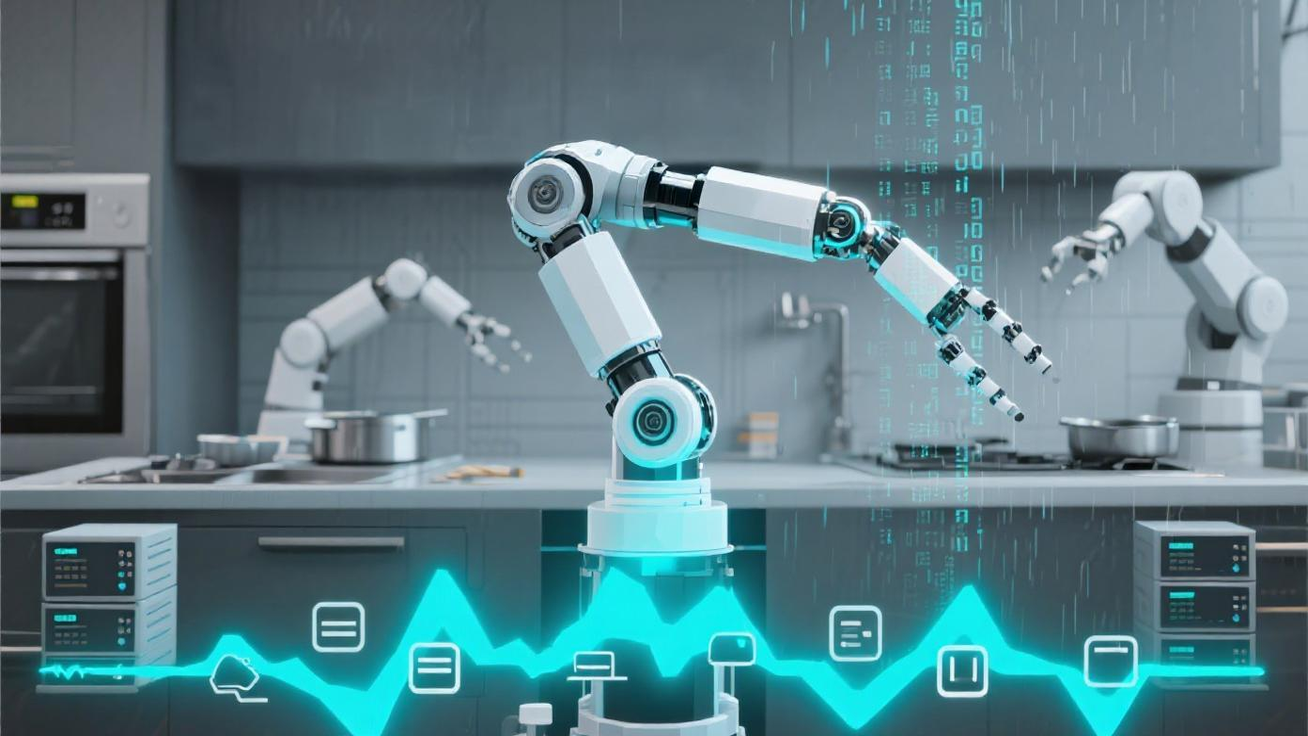Embodied intelligence represents the next frontier in AI. But teaching robots to understand and act in the real world — fold laundry, cook, clean — requires far more than model innovation. It requires experience. And that experience comes from data — structured, interactive, diverse, and increasingly, human-centered.
This article takes you inside a real project that delivered such data: a scalable human-in-the-loop pipeline designed to fuel the learning of home-assistant robotic arms in simulaed kitchen environments.
1. Real-World Challenge: Training Robotic Arms for Complex Home Tasks
Our client was developing a simulation-driven AI training platform (based on LIBERO) for home service robots. Their goal: train robotic arms to handle realistic domestic tasks — cooking, organizing, and interacting with diverse household objects.
Key Use Case:
· Task domain: Kitchen environments (e.g., “combine pudding and wine, turn on stove”).
· Data goal: High-quality human demonstration data (video + motion logs) to support imitation learning.
· Target outcome: Robots that can plan and execute complex manipulation tasks autonomously.
2. Data Bottlenecks: Where Scale Meets Friction
Even in a virtual training setup, the project encountered key roadblocks:
3. Our Solution: A Structured Human-in-the-Loop Data Pipeline
To scale demonstration data generation without sacrificing quality, we designed a structured pipeline with human operators at the core.
Step 1: Task Review & Action Flow Optimization
· All instructions translated to natural languages.
· Motion logic reviewed by senior annotators to pre-check feasibility.
Step 2: Motion Capture + VR Demonstration
· Operators executed tasks using simulation controls (via VR/gamepad).
· Practice runs emphasized fluidity and timing to avoid mid-task interruptions.
Step 3: Multimodal Recording
· Each demo recorded in HDF5 format (joint states, camera views, object status).
· Key video moments exported for QA.
Step 4: Error Detection & Resilience Features
· Added physics lock & emergency pause to avoid unstable scene collapses.
· Pre-load object validation scripts ensured all assets loaded correctly.
Step 5: Granular QA and Rework Pipeline
· Data split into “action chunks” for per-step quality control.
· Review feedback loop handled by experienced QA team.
· Final result only approved if all steps met semantic and physical correctness.
4. Technical Enhancements
· Standardized Action Templates: High-frequency tasks (e.g., “grab bowl”, “pour liquid”) templated to boost consistency.
· Motion Trace Replay: Recorded successful trajectories could be re-executed automatically for failed attempts.
· System Compatibility Fixes: Moved from Linux remote to macOS local for smoother runtime and better UX.
· Hotkey Mapping & Gamepad Integration: High-frequency actions (e.g., reset, grasp) bound to shortcuts to speed up input.
5. Value Delivered
6. maadaa.ai Thoughts: Scale Comes from Structure and People
This project reveals a simple truth: robots don’t learn in isolation. Behind every seemingly autonomous action lies a meticulous loop of design, demonstration, validation, and iteration — powered by human expertise.
Scalable embodied AI isn’t just about “big data,” but about the right data — interactive, structured, reusable, and grounded in human understanding.
By integrating simulation, human demonstrations, and quality engineering, we helped our client build a robot that doesn’t just see or move — but begins to understand.
Want to co-develop your own embodied data pipeline? Let’s talk about how to get your robots ready for the real world.



